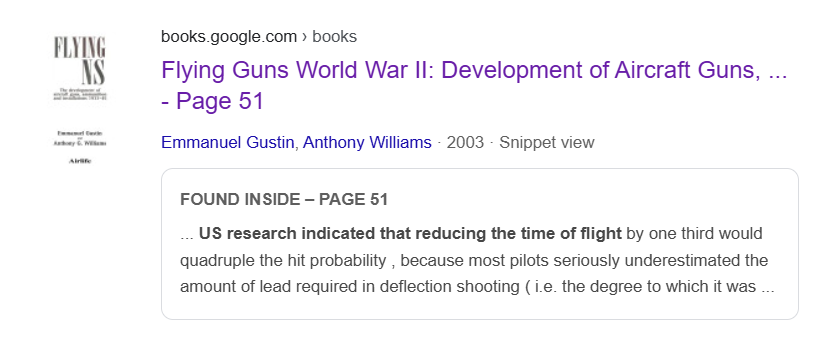Colonial-Marine
UAVs are now friend, drones are the real enemy.
- Joined
- 5 October 2009
- Messages
- 1,468
- Reaction score
- 1,323
I don't know what US experiments occurred with .50 caliber HEI ammunition but late in the war a .50 caliber "super incendiary" cartridge was introduced that carried a lot more compound than the common API cartridge. It didn't get to see too much use during the war, but I think it left a positive impression. The 13.2mm FN Brownings could fire what is supposed to have been a rather effective HEI cartridge too.
There are two things I think would have really benefitted USAAF (and USN aviation) armament during the war.
#1 would be if FN had gotten plans and guns for the 13.2mm Browning over to the UK before the Germans took Belgium. I believe the UK and France had already agreed to adopt the weapon, but events had made that irrelevant. If the UK did get examples however it's possible the USA could have put into production an improved .50 caliber machine gun with a higher rate of fire, closer to that of the AN-M3 which historically was only introduced in the final days of the war. The US certainly wouldn't switch from .50 caliber (12.7mm) BMG to the 13.2mm cartridge, but that difference is pretty minimal. Perhaps examples of that 13.2mm HEI would aid in the US developing similar projectiles in .50 BMG.
#2 would be fixing the production issues which cause such difficulties with US-built 20mm Hispanos. That would probably also greatly aid in making the .60 caliber T18 variant of the Hispano function somewhat reliably. Whether or not that .60 caliber option would have any worthwhile applications is its own question, however. In most cases 20mm is the better option considering the weight of the guns and ammo would be about the same.
There are two things I think would have really benefitted USAAF (and USN aviation) armament during the war.
#1 would be if FN had gotten plans and guns for the 13.2mm Browning over to the UK before the Germans took Belgium. I believe the UK and France had already agreed to adopt the weapon, but events had made that irrelevant. If the UK did get examples however it's possible the USA could have put into production an improved .50 caliber machine gun with a higher rate of fire, closer to that of the AN-M3 which historically was only introduced in the final days of the war. The US certainly wouldn't switch from .50 caliber (12.7mm) BMG to the 13.2mm cartridge, but that difference is pretty minimal. Perhaps examples of that 13.2mm HEI would aid in the US developing similar projectiles in .50 BMG.
#2 would be fixing the production issues which cause such difficulties with US-built 20mm Hispanos. That would probably also greatly aid in making the .60 caliber T18 variant of the Hispano function somewhat reliably. Whether or not that .60 caliber option would have any worthwhile applications is its own question, however. In most cases 20mm is the better option considering the weight of the guns and ammo would be about the same.

![355fg WRBbar_Jane IV_belly landing 29nov1944 [marshall].jpg](/data/attachments/282/282833-984bd3a0ad07e2f6f38611b2b7c40734.jpg)
![355fg WRBbar_Jane VI_Marshall_22mar1945 [marshall].jpg](/data/attachments/282/282834-77e716f9d7ceeabc22352d2ef4451f73.jpg)
